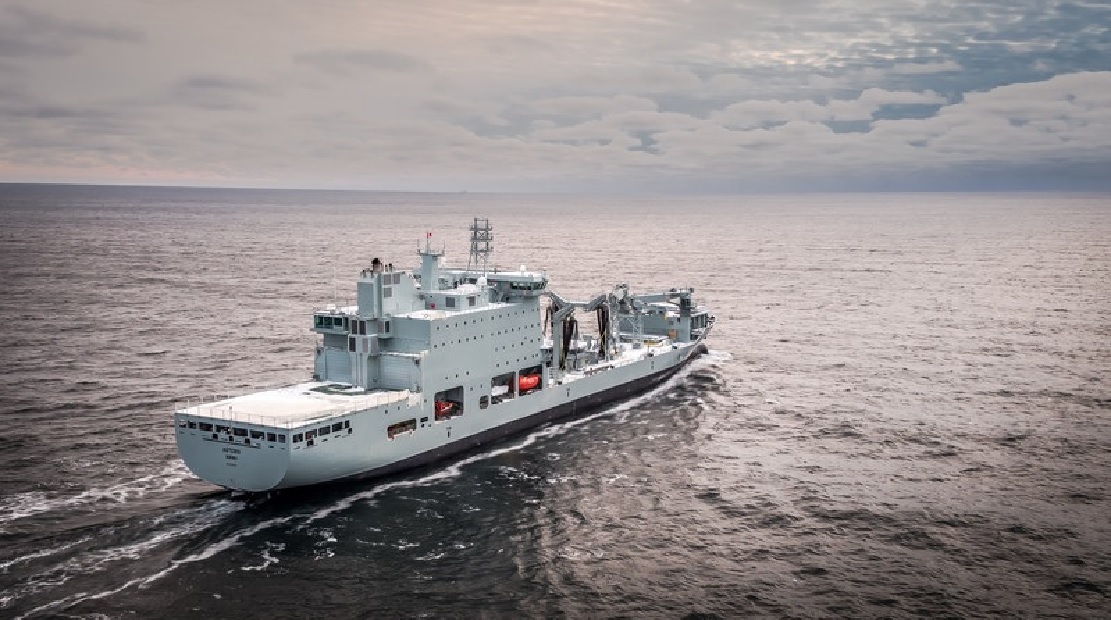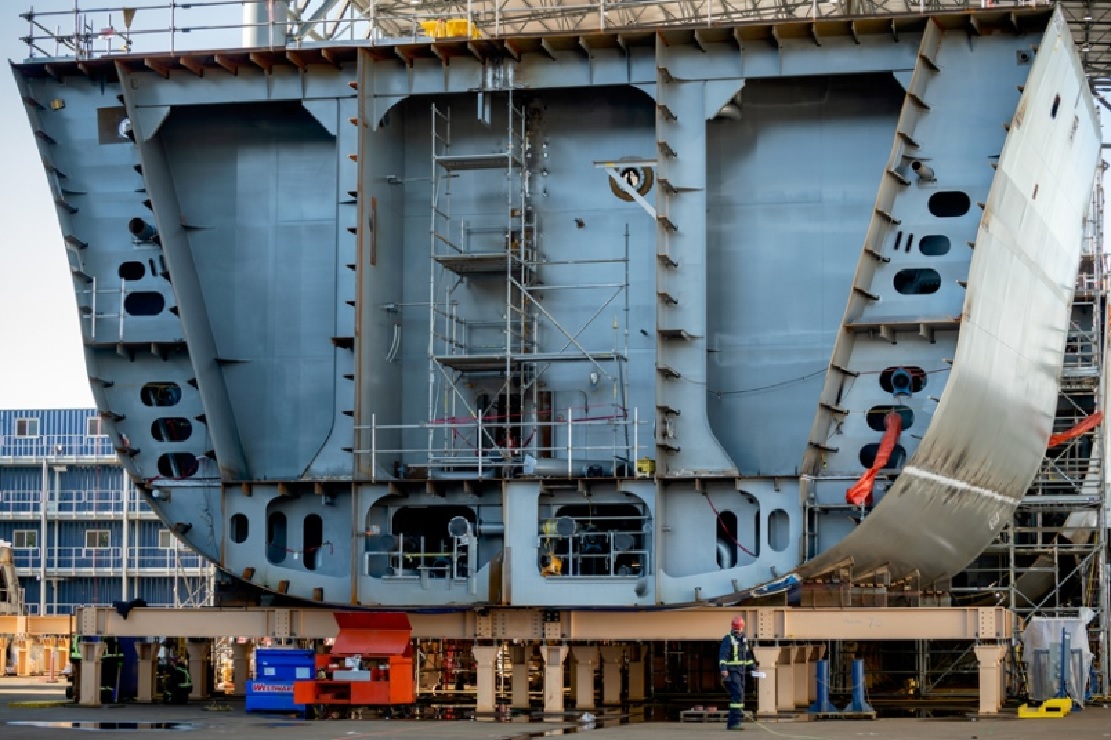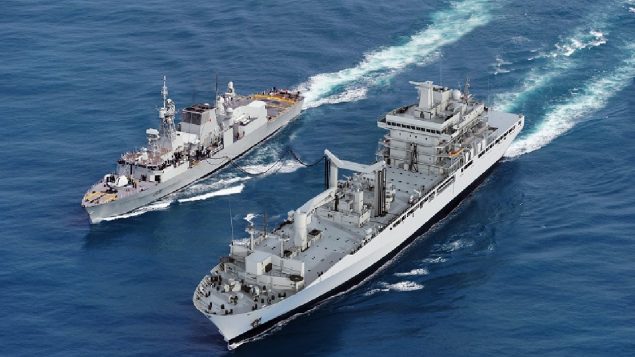Anyone who follows Canada’s military procurement knows it is and long has been, fraught with issues, delays, changes, and costs.
A new report suggest Canada could have had new naval supply ships, if it hadn’t delayed the original programme years ago, and/or if it decided to buy converted cargo vessels.
When Canada’s two aging naval supply ships were paid off, Canada leased a Chilean Navy supply vessel in 2015 as a limited duration stop-gap measure. Two new supply ships were then to be built but due to the time delay Canada’s navy would be without supply ships.
Plans for replacement of the two then existing supply ships dates back to 2004, with three new ships to be available by 2012. Various delays and cost overruns stalled the programme which was restarted in 2010. However, both existing ships encountered serious and costly issues resulting in them being withdrawn early, leaving the Navy with no supply vessels.

HMCS Protecteur, being towed to Hawaii in 2014 after a major engine fire. It would later be towed to Canada, where repairs were deemed too costly for the aging ship. The other supply ship, HMCS Preserver was withdrawn also in 2014 due to rust and ongoing electrical problems and was paid off in 2016 leaving Canada with no supply ships ( U.S Navy)
To deal with the issue, the Conservative government let a sole-source $700m contract to Davie Shipyard to acquire and convert a commercial ship into a supply vessel in 2015. The newly elected incoming Liberal’s then wanted to pause and re-examine the deal. The navy however needed the ship and a controversial political battle ensued with the Liberal government charging a high ranking naval officer with breach of trust for allegedly leaking confidential documents. Eventually the government dropped the case and the ship, MV Asterix, was completed and is now leased to the Royal Canadian Navy and known as an Auxiliary Oiler, Replenishment ( AOR). The Davie Shipyard in Quebec is pushing for the navy to acquire a second such ship which would be known as, MV Obelix. The
But what about the military ships?
Canada has ordered two ‘Joint Support Ships’ (JSS) being built in Vancouver. But as is expected, costs have risen from the original $3.4 billion, to $4.1 b. The first ship is expected to be completed in 2023, the second two years later.

MV Asterix on maiden voyage from Quebec City to Halifax Dec 25, 2017; (CNW- Davie Shipbuilding)
Now the Parliamentary Budget Officer, Yves Giroux, has released a report on the comparable costs. The study was launched in June at the behest of a Conservative Member of Parliament and the Parliamentary committee on operations and estimates.
The report says the government could buy, not lease, the two converted ships for about $1.4 billion, far less than the cost for the two JSS. The PBO admits that the various capabilities of the converted ship and the purpose-built military ship were not considered in his study.
The Department of Defence quickly responded and defended the JSS programme in a statement today saying the two types of vessels are in fact vastly different:
“MV Asterix, and the proposed MV Obelix, do not have the same capabilities as the future Joint Support Ships. The Joint Support Ships were designed to be able to deploy into harm’s way, a key element of the military design. Examples of capabilities that were designed into the Joint Support Ships that are not available on MV Asterix include”:
- a mine-avoidance degaussing system,
- systems to detect and protect against chemical, biological, radiological, and nuclear threats,
- a dual redundant propulsion system,
- damage control capabilities that meet military standards,
- a cyber-resilient command management system,
- self-defence capabilities, including a combat management system, naval remote weapon systems and close-in weapon systems,
- a hangar and flight deck that can support the Cyclone aircraft, and
- certified, fitted magazines to transport specialized ammunitions, such as torpedoes.
“These additional features provide a survivability that is critical to ensure the safety of our sailors in high-risk areas, as the Royal Canadian Navy (RCN) must have the capability to maintain a persistent presence in high-threat areas if the security of Canadians demands it. No modifications to MV Asterix could provide the survivability offered by a built-for-purpose ship. Purpose-built warships like the Joint Support Ships provide the best available protection for our sailors with a military design that incorporates higher damage control standards and counter-measures against threats from torpedoes, mines, or missiles.”

A section of the new JSS currently under construction in North Vancouver at the Seaspan Shipyard ( Seaspan)
Still, at least one expert is not quite convinced. Quoted by the CBC, defence analyst Dave Perry says the argument that the supply ships must be ready for war zones may be a stretch. He says in a conflict area supply ships are moved away from danger as they are “floating gas cans”. He also wondered about the value of the $3 billion difference in the two options. Davie Shipyard also discounts the claim saying MV Asterix has been serving the RCN for two years with no issues.
The question may be moot however as Yve Giroux noted it’s probably too late for the government to back out of the JSS programme. He also said that had the government followed through on the original plan, the RCN would have more capable ships at a lower price than the $2.3b they had then budgeted for.
additional information-sources
- Govt of Canada- Joint Support Ships
- PBO- study: The Joint Support Ship program and the MV Asterix: a Fiscal Analysis,
- CBC. M Brewster: Nov 17/20: Navy missed a chance to get its new supply ships at a much lower price, PBO suggests
- Canadian Press (PostMedia): L Berthiame: Nov 17/20: Navy could get get Davie supply ships at fraction of the price of building new- PBO
- CBC: M Brewster: Jun 15/20: Ottawa awards $2.4B contract to finish building navy’s supply ships
- CBC: M Gollom: May 8/19: What you need to know about the Vice-Admiral Mark Norman case







For reasons beyond our control, and for an undetermined period of time, our comment section is now closed. However, our social networks remain open to your contributions.